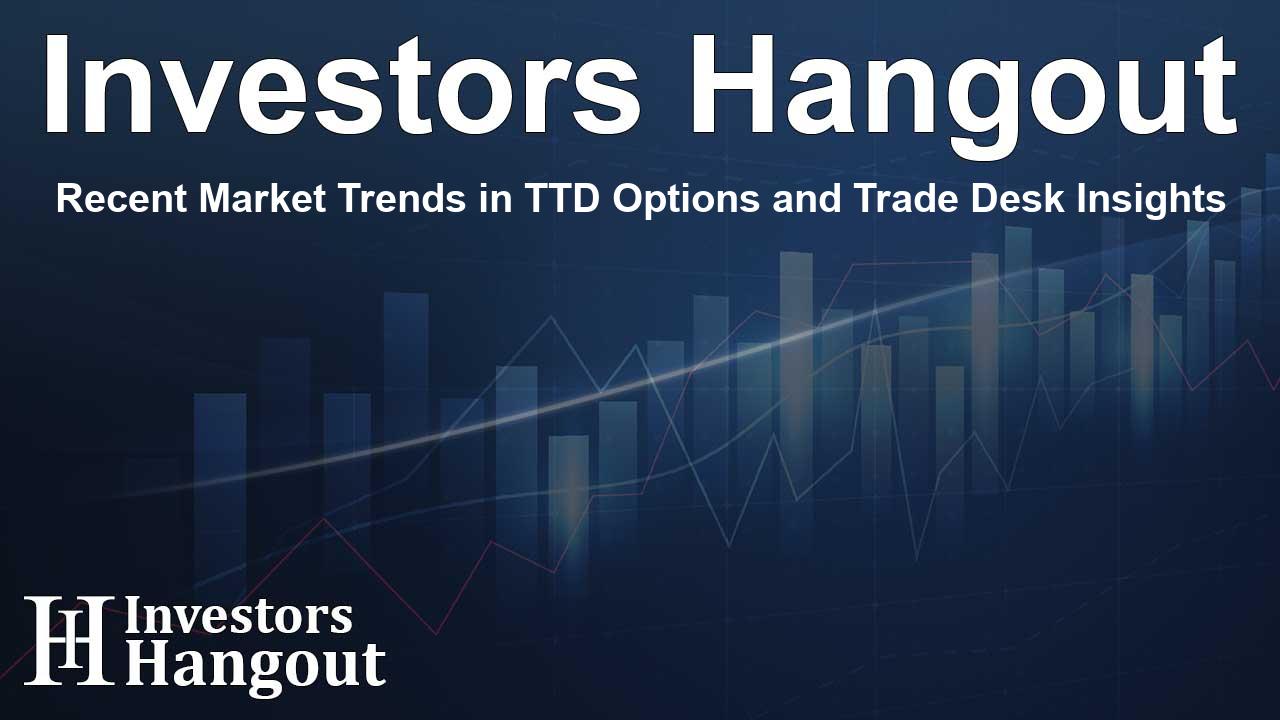Recent Market Trends in TTD Options and Trade Desk Insights

Understanding the Buzz Around Trade Desk Options
Recently, a group of high-investment players made noteworthy moves regarding Trade Desk (TTD). This has stirred interest among retail traders who want to stay informed about market trends.
Investors, whether institutions or affluent individuals, often engage in substantial trades, hinting that something significant could be on the horizon. When such large transactions occur, it often signals that insiders might be anticipating important developments.
Today, our options scanner revealed a surprising surge in uncommon options trades associated with Trade Desk. This situation isn't typical, so it warrants a closer look.
The sentiment from these substantial traders shows a split in outlook, with about 40% taking a bullish position and only 10% adopting a bearish viewpoint. A dive into the specifics reveals that of the special options trades analyzed, 3 are puts amounting to $108,745, and 7 are calls aggregating to $413,207.
Projected Price Movements for Trade Desk
By scrutinizing the volume and open interest in these contracts, we can gain insights into potential price movements for Trade Desk over the last quarter. Notable indicators show that major players are eyeing a price range between $60.0 and $145.0.
The Importance of Volume and Open Interest
Evaluating both volume and open interest is essential when trading options. This analysis offers crucial insights into the liquidity and interest surrounding Trade Desk's options at various strike prices. Recent data show trends in volume and open interest involving trade whales, focusing on strike prices within that $60.0 to $145.0 window over the past month.
Recent Activity in Call and Put Options
In examining the notable options activity, we see a detailed breakdown of significant trades:
Key Takeaways from Significant Options Trades:
- Trade Desk symbol: TTD
- A significant portion of trades reflects different strategies—CALLs versus PUTs. The various trade types signal differing market sentiments.
- Overall, the market appears to lean towards bullish sentiment, as the volume for CALLs outweighs that of PUTs.
Introducing Trade Desk
Trade Desk’s self-service platform empowers advertisers and agencies to programmatically acquire digital ad inventory across multiple formats including display, video, audio, and social media. Using data analytics, Trade Desk optimizes ad performance and is recognized in the ad industry for its demand-side platform. The company generates revenue through fees that are a percentage of its clients' advertising expenditures.
Current Market Performance of Trade Desk
- TTD currently exhibits a trading volume of 1,414,867, with the stock up 2.67% at a price of $120.87.
- Relative Strength Index (RSI) indicators suggest the stock may be leaning towards an oversold position.
- Looking ahead, next earnings are anticipated within a month.
Expert Analyst Ratings for TTD
Five analysts have recently weighed in on Trade Desk, resulting in a consensus price target expected to reach $144.0. Their ratings present an intriguing outlook, including:
- Wolfe Research maintains an Outperform stance with a target of $155.
- Wedbush has adjusted its stance to Outperform, setting a new target price of $135.
- RBC Capital has also retained its Outperform rating, aiming for a price target of $140.
- Truist Securities remains optimistic, holding a Buy rating with a $155 price target for Trade Desk.
While trading options comes with increased risk, it also presents opportunities for commendable profits. Astute traders often minimize risks by engaging in continued education, making strategic trade modifications, and closely following market patterns.
Frequently Asked Questions
What is Trade Desk's primary service?
Trade Desk provides a self-service platform for advertisers to purchase digital ad inventory across various channels and devices.
What do recent trades for TTD suggest?
The trades indicate a predominantly bullish sentiment among significant investors, with a strong preference for call options.
How do volume and open interest contribute to options trading?
Volume refers to the number of contracts traded, while open interest denotes the total outstanding contracts. Both metrics help assess market interest and liquidity for specific options.
What is the current earnings outlook for Trade Desk?
Trade Desk's next earnings report is anticipated within a month, potentially affecting stock performance and investor sentiment.
How should investors approach options trading with TTD?
Investors should engage in continuous learning, evaluate market news, and apply risk management strategies to navigate options trading successfully.
About The Author
Contact Addison Perry privately here. Or send an email with ATTN: Addison Perry as the subject to contact@investorshangout.com.
About Investors Hangout
Investors Hangout is a leading online stock forum for financial discussion and learning, offering a wide range of free tools and resources. It draws in traders of all levels, who exchange market knowledge, investigate trading tactics, and keep an eye on industry developments in real time. Featuring financial articles, stock message boards, quotes, charts, company profiles, and live news updates. Through cooperative learning and a wealth of informational resources, it helps users from novices creating their first portfolios to experts honing their techniques. Join Investors Hangout today: https://investorshangout.com/
The content of this article is based on factual, publicly available information and does not represent legal, financial, or investment advice. Investors Hangout does not offer financial advice, and the author is not a licensed financial advisor. Consult a qualified advisor before making any financial or investment decisions based on this article. This article should not be considered advice to purchase, sell, or hold any securities or other investments. If any of the material provided here is inaccurate, please contact us for corrections.
